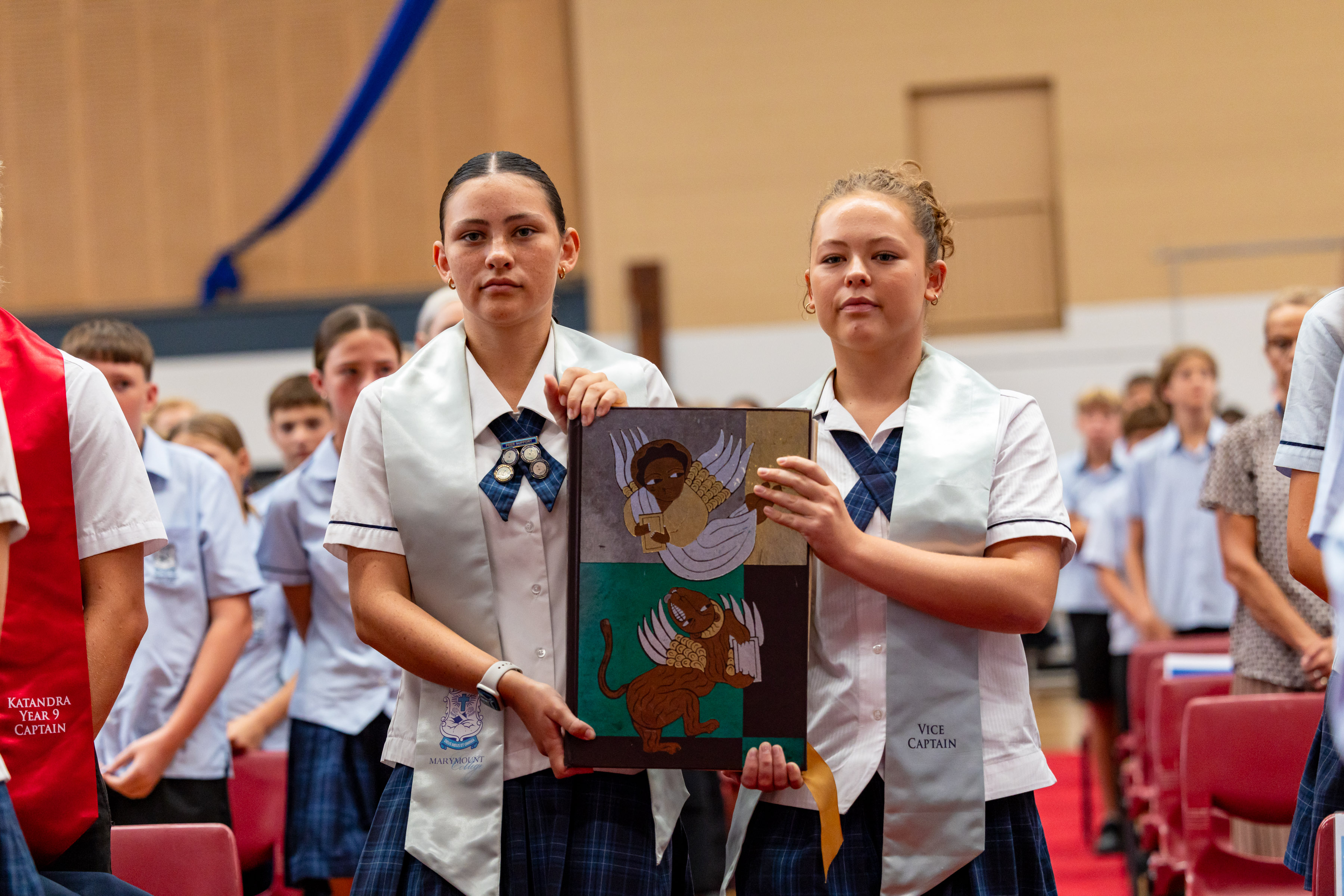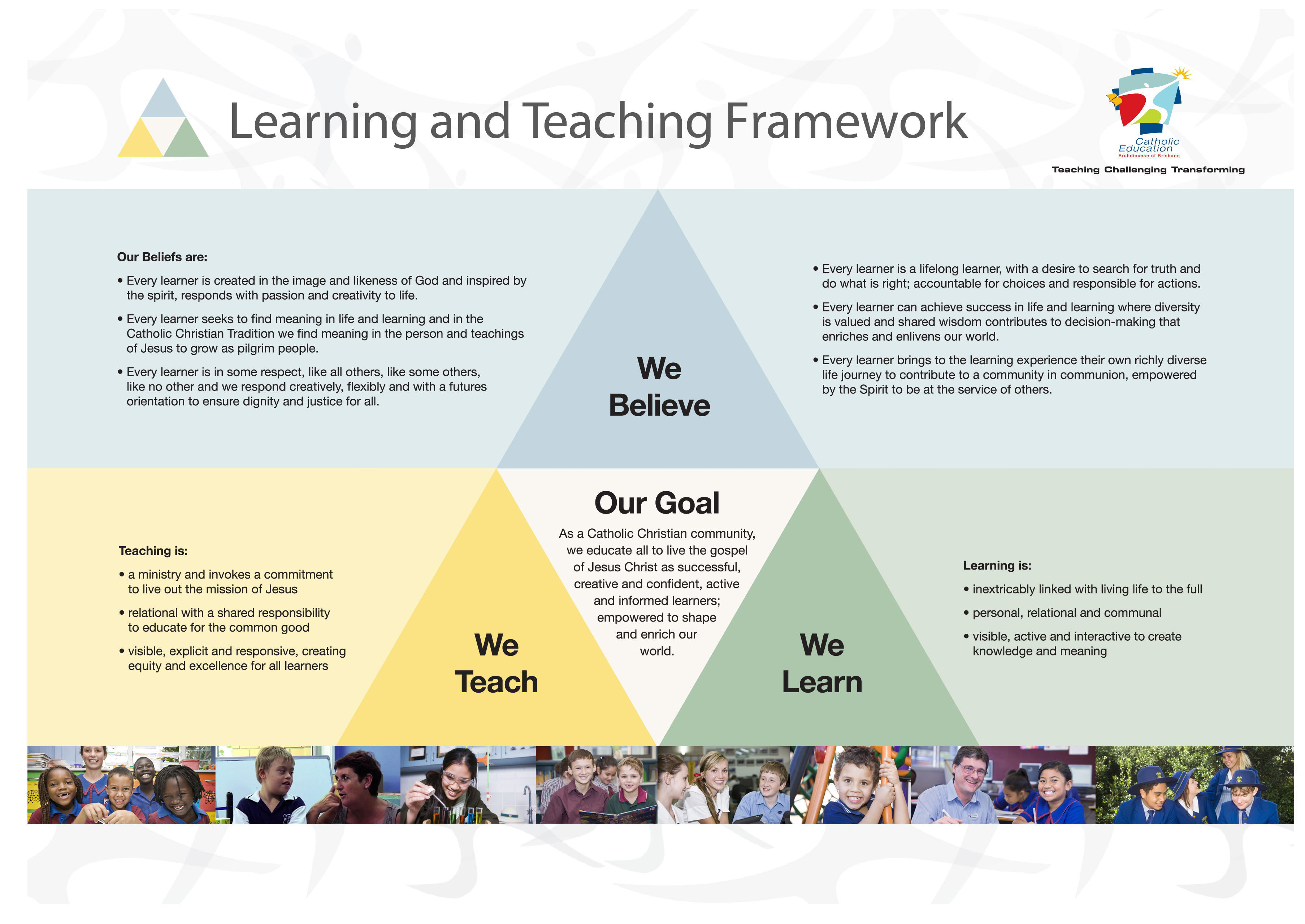
© Brisbane Catholic Education, Marymount College (2025)
Our Vision for Religious Education
Marymount College shares and promotes the Vision for Religious Education articulated by Brisbane Catholic Education and the wider church. This vision includes the two dimensions of formation- namely, of students’ religious literacy and their personal faith:
- The schools and colleges of the Archdiocese of Brisbane aspire to educate and form students who are challenged to live the gospel of Jesus Christ and who are literate in the Catholic and broader Christian tradition so that they might participate critically and authentically in faith contexts and wider society. The Vision for Religious Education also appropriately aligns with the goal for learning and teaching as articulated in the Brisbane Catholic Education (BCE) Learning and Teaching Framework (2012):
- As a Catholic Christian community, we educate all to live the gospel of Jesus Christ as successful, creative, confident, active and informed learners empowered to shape and enrich our world. The Vision for Religious Education challenges students to be a religious voice in the world. The Vision gives greater prominence and a renewed orientation to the critical interpretation and evaluation of culture. Through vibrant and engaging Religious Education, students become active constructors of culture rather than passive consumers. In this way, students are challenged to live the gospel of Jesus Christ in their everyday lives.
- Religious Education at Marymount College seeks to develop the religious literacy of students in light of the Catholic Christian tradition so that they might participate critically and authentically in contemporary culture. Jesus Christ is always the centre of this Vision. Through engagement with both dimensions of Religious Education, students are challenged to be cultural agents in light of the Gospel; authentic witnesses to the mission of Jesus Christ in the world today. Students become religiously literate as they develop the knowledge, skills and dispositions to interpret and use language confidently in and for faith contexts and the wider society.
- In this school, religious literacy includes ways of talking, acting, creating, communicating, critiquing, evaluating, participating, ritualising, theologising, worshipping, reading, reflecting, and writing with others in a variety of religious and secular contexts. Examination of the sample units of work reveals how, in all units of work, teachers and students seek to integrate the two dimensions of religious education, so that religious literacy and faith formation can complement each other as students seek to find meaning in their place and time. The integration of both dimensions in the daily life of the school includes prayer in every classroom to start the day and the timetabling of the mandatory hours of classroom-based engagement with the religion curriculum at the school.
- While knowledge and understanding of religious concepts are important, the truths and beliefs to which a student adheres must have some consequence in their life. Effective Religious Education requires teachers to be more than purveyors of knowledge and students to be more than consumers of the tradition.
More Information
More information on BCE’s vision for Religious Education can be found here
Learning and Teaching Framework The Learning and Teaching framework below underpins work done in Religious Education
